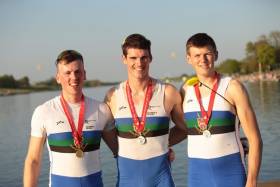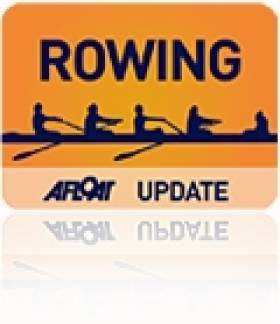Displaying items by tag: Nottingham
Queen's in the Medals at BUCS Rowing Regatta
#Rowing: Queen’s University, Belfast, launched a very successful raid on the medals available on the first two days of the BUCS Regatta in Nottingham.
Queen’s had a very successful Saturday. They won the Beginners’ coxed four, and their talented group of scullers also shone. Philip Doyle took silver in the Championship single, while Sam McKeown took fourth. In the intermediate single, Queen’s took gold and silver, through Tiernan Oliver and Nathan Hull.
This foursome were again on song on Sunday. McKeown and Doyle took silver in the Championship double, and Hull and Oliver matched them. Fiona Bell also made the podium in the women’s Championship single scull, taking bronze.
BUCS (British University) Regatta, Nottingham (Selected Results; Irish interest)
Saturday
Men, Four – Beginners’, coxed: 1 Queen’s 7:10.49.
Sculling, Single – Championship: 1 Edinburgh (J Armstrong) 7:20.99, 2 Queen’s (P Doyle) 7:22.01; 4 Queen’s (S McKeown) 7:27.73. Intermediate: 1 Queen’s (T Oliver) 7:37.48, 2 Queen’s (N Hull) 7:37.66.
Sunday
Men, Sculling, Double – Championship: 1 Reading 6:40.76, 2 Queen’s 6:43.56. Inter: 1 Reading 6:55.04, 2 Queen’s 7:00.91.
Women
Sculling, Single – Championship: 1 Edinburgh 8:09.20; 3 Queen’s 8:26.50.
Henley Hopes Short-lived for Lady Elizabeth Crew
#Rowing: Henley Royal Regatta did not yield any early joy for Irish crews this morning. In the Wyfold Cup coxless fours, Lady Elizabeth were beaten by Nottingham Rowing Club ‘A’. The English crew cut across from their station at the start and took a lead which they did not relinquish. Lady Elizabeth tried hard in the warm conditions, but their young opponents held on to their lead and won by two and a half lengths.
Henley Royal Regatta, Day One (Irish interest)
Wyfolds (Fours, Club): Nottingham RC ‘A’ bt Lady Elizabeth BC 7 mins 39 seconds, 2½ l.






























































